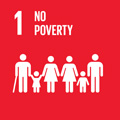- Docente: Carolina Mudan Marelli
- Credits: 10
- SSD: SPS/10
- Language: Italian
- Teaching Mode: Traditional lectures
- Campus: Forli
- Corso: First cycle degree programme (L) in Sociology (cod. 8495)
-
from Sep 16, 2024 to Dec 09, 2024
Learning outcomes
At the end of the course, the student is able to understand and contextualise contemporary migration processes, with reference to general trends, the causes of migration, the links between immigration and the labour market, and immigration-related urban changes. Through in-depth studies on ethnic networks, gender differences and families, second generations and refugees, the student is able to gather and understand the fundamental elements of migration regulation and immigrant policies.
Course contents
The course aims to provide the main conceptual and analytical tools for a sociological analysis of migration, presenting the most accredited interpretative models, the most recent trends and the social impact of the phenomenon in the European context. At the same time, the empirical activity requested of the students, through the realisation of video interviews with key interlocutors, will allow them to understand the reality of the migration phenomenon.
In the first module, the coordinates of the contemporary debate on international migration and the interpretative models of the phenomenon will be reconstructed starting from some theoretical contributions from different fields of study. In addition, the topic of the recent outsourcing of migration regulation policies and the processes of rationalisation that take shape in the labour spheres in which migrant labour is employed will be dealt with. Two lectures of 2 hours each by two external lecturers are planned on these topics.
In the second module, of workshop type, which will take place concurrently with the theory part, the students*, divided into groups, will have to produce a series of video interviews on central themes regarding the migration issue (policies; work; housing; reception; documents; racism and discrimination etc.) with migrants and different key actors of the Emilia-Romagna territory. This material should be accompanied by a paper that discusses the main elements that emerged from the interviews carried out by each group. This empirical work on the theme of migration will allow to contextualise the sociological theories that will be presented during the course, while enhancing sociology's methodological skills. Finally, the material produced by the various groups will be the subject of a public presentation and discussion with the various Forlì realities involved in the field of migration.
Readings/Bibliography
1. Maurizio Ambrosini, Sociologia delle migrazioni, Il Mulino, Bologna, 2020. Capitoli 1-10 (Parte prima: coordinate e processi fondamentali // Parte seconda: attori emergenti // Parte terza: la dimensione politica)
2. Abdelmalek Sayad, La doppia assenza. Capitoli: 1-2-3-4-5-6-7-10-12.
3. Giorgio Grappi & Sonia Lucarelli (2022) Bordering power Europe? The mobility-bordering nexus in and by the European Union, Journal of Contemporary European Studies, 30:2, 207-219, DOI: 10.1080/14782804.2021.1997728 [https://doi.org/10.1080/14782804.2021.1997728]
Then a contribution to be chosen among:
4. Jacopo Anderlini, Luca Queirolo Palmas, Camps archipelago: an ethnography of migrant agricultural laborers in the potato harvesting in rural Sicily in "MONDI MIGRANTI" 1/2023, pp 169-194, DOI: 10.3280/MM2023-001009
5. Alberti, G., & Sacchetto, D. (2024). INTRODUZIONE del testo “The Politics of Migrant Labour: Exit, Voice, and Social Reproduction”. Policy Press.
Teaching methods
The lectures will be complemented by a workshop part. In both cases, the active involvement of students is expected.
Assessment methods
The examination aims at verifying the achievement of the following learning objectives:
1. Knowing how to recognize the essential features of the discipline;
2. To know the evolution of the sociological debate on migration phenomena;
3. Being able to identify and analyze the main features of contemporary migration phenomena;
4. To know how to use with propriety the fundamental interpretative concepts of the discipline.
The final score for the course will be defined by means of a first written intermediate test (Ambrosini+Sayad), on the basis of the workshop work and finally by means of a second written intermediate test on the remaining texts (Grappi, Lucarelli + the contribution of your choice).
For those who do not attend the course, the final grade will be determined by an oral test. The student's ability to move within the bibliographic material indicated in the examination programme, as well as an organic vision of the themes addressed and the possession of a mastery of expression and language will be positively assessed.
Students who, for various reasons, cannot write or speak in Italian may take the written or oral test in other languages: French, English, Portuguese, Spanish.
Teaching tools
Slides available on virtuale
Office hours
See the website of Carolina Mudan Marelli
SDGs



This teaching activity contributes to the achievement of the Sustainable Development Goals of the UN 2030 Agenda.
